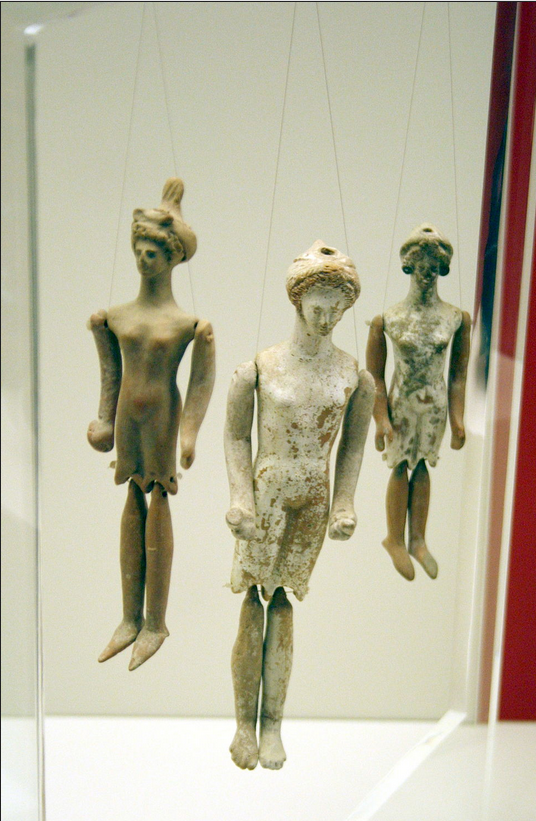Why did puppets and puppetry ever get started? The consensus of historians is that all over the world puppetry started in the area of the sacred with religious ceremonies. Puppets were used as ritual objects that were animated to either bring forth or to appeal to supernatural forces.
From the beginning the puppet has been employed in many rites and rituals. Especially in Africa and Asia, puppets were used extensively in the important ceremonies and had significant meaning. Gods were represented by movable statues in processions and ceremonies. A variety of ritual figures used by the Native American peoples of the United States have been found. Some of these objects have movable joints and were operated by strings.
Even the monotheist religions which fought against “idolatry” brought back or kept puppet practices that existed in ancient cultures. The medieval clergy used animated figures and puppets to help preach Christianity. A devil puppet would usually be a leading player. His evil practices would create long lasting and impactful lessons. During the Middle Ages in France, string puppets were often used to tell biblical events. One of the first figures to be made into a marionette was the Virgin Mary. In fact, the French word “marionette” means “little Mary”.
Where Did Puppetry Start?

What is It? A Puppet or Doll or Dance Object?
While doing research about puppets and puppetry before the 20th century, I discovered that historians of ancient cultures are divided about how to classify particular objects. I am really curious as to how an ancient artifact would be classified since I’m a puppeteer and interested in puppets. Was that object used as a puppet, a dance object or was it a doll?
Puppets
To me a puppet can be defined as: any inanimate object that is made to come alive through motion by the process of manipulation. The term puppet is generally associated with the models of persons or animals which are controlled using hands, gloves, sticks and strings. At the heart of puppetry is the action of setting these objects into motion in such a way to create a character that appears to come alive. That character could be a person, animal, insect, alien or even a thing like a toaster.
Dolls
Puppets and dolls are favorite toys among children. Dolls are generally used in the context of a representational model of a baby or a girl. Puppets and dolls seem to be in the same category because some features overlap in the definitions of each. It seems that it has only been in the last few years that puppets and puppetry have been recognized as an art form rather than just playthings for kids. In light of that, it makes one wonder as to how many puppets were incorrectly classified as dolls because of that viewpoint.
Dance Objects
Dance objects are used in any type of choreography, whether rehearsed or impromtu. Some religious ceremonies include dance. The dance objects are treated as part of movement. The dancer uses them as if they are another part of their body. In addition to moving the object the dancer can move in partnership with it as if it were another dancer.
Challenges in Classifying a Puppet as a Puppet
The biggest challenge is the lack of written records about how a particular object was used by ancient cultures and civilizations. A lot of knowledge has been lost since it was passed down verbally through the generations. Particularly with the United States’ Native Americans, a huge amount of knowledge has been lost.
My main takeaway is that it’s up to anyone’s interpretation and imagination as to whether an object from an ancient culture was used as a puppet, doll or dance object. Or all three.
Sources:
